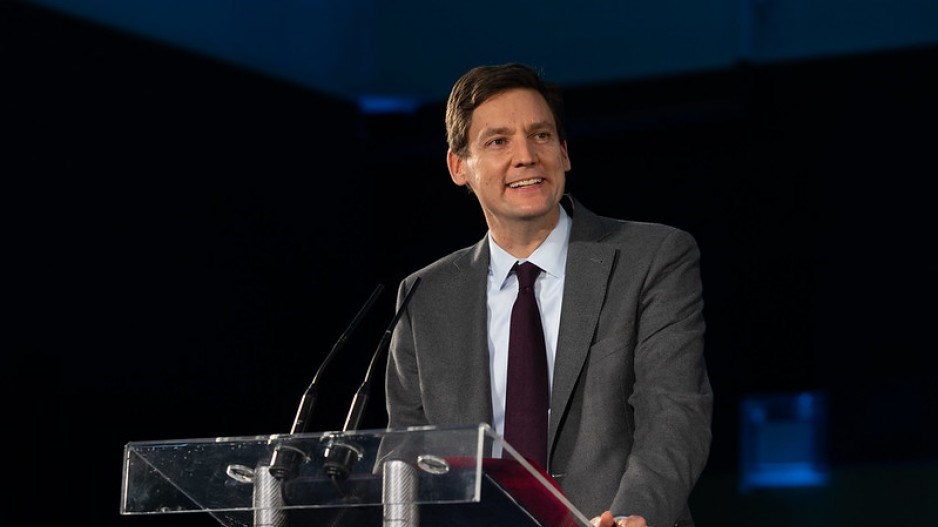Reading the B.C. government’s new affordable housing plan Monday brought to mind that old Mark Twain line: There are lies, damned lies and then there are statistics.
You’d think it would be easy to use cold, hard, dispassionate statistics to figure out where the government is at on its old 10-year affordable housing plan, as Premier David Eby launches the province forward on his new, refreshed, ambitious vision for housing.
After all, it’s been six years and two election campaigns in which New Democrats have proclaimed they were building 114,000 new affordable housing units by 2027.
“We are on track to meet our target of 114,000 units in 10 years and go beyond that,” said Eby on Monday. “We’ve made real progress. And while the statistics are clear that our province is building more housing than ever before, interest rates, global inflation, and a quickly growing population have brought even more challenges.”
The statistics, though, are not clear. And they don’t necessarily tell the truth.
To understand where the province is at on its plan to build 114,000 new housing units you have to do two things: Erase from your mind any notion that the government is actually building those units. And then erase the idea that the units are new.
If you can do both, you’ll have reached the level of cognitive dissonance needed to read the NDP’s housing progress report without pulling your hair out.
The government argues it has built, or is under construction, or in progress on 74,668 housing units — 65 per cent of its way to its 2027 targets.
But that total is misleading at best.
It includes 20,805 units that may have come back on to the rental market due to the speculation and vacancy tax (it’s not that’s what happened, and even if it did, they are not all new units). It also includes 11,000 units the federal government subsidies for rent through the Canadian Mortgage and Housing Corporation.
It counts 2,600 units that may appear by allowing more secondary suites, and removing a ban on age-restrictions for rentals in stratas.
And it includes thousands of units of temporary and permanent modular housing created to get homeless people out of parks and encampments, plus motels and hotels the province bought to bring unhoused residents off the street.
There’s a legitimate debate to be had about whether counting speculation tax properties, federal subsidies, age-specific rental restrictions and homeless spaces was what the NDP promised in the 2017 election when it said it would “build directly, and through partnerships, 114,000 rental, social and co-op homes over 10 years."
Or, whether that’s what was envisioned in then housing minister Selina Robinson’s first mandate letter: “Through partnerships with local governments, the federal government, and the private and not-for profit sectors, begin to build 114,000 units of affordable market rental, non-profit, co-op, supported social housing and owner-purchase housing.”
New Democrats argue you can actually count a unit “built” if it existed previously but became available due to some sort of government policy, tax, or acquisition.
This may be true, but the NDP also gave the distinct impression to voters they were actually planning to, you know, build stuff. With hammers. And drywall. And pieces of wood.
And they wanted people to believe those new homes would be available for middle-income, middle-class, cash-strapped, hard-working, urban voters who are priced out of condos and homes in Metro Â鶹´«Ã½Ó³»and Greater Victoria. The overall goal was to build more, and bring prices down.
The housing plan, including the new one Eby released Monday, is filled with pictures of these types of British Columbians — happy families carrying moving boxes into a new townhome, or painting the walls of their new house.
But six years in, when it comes to those kind of actual housing units, built the way the NDP promised, for the kinds of folks it portrays smiling in its own housing documents, the number is shockingly low.
Only approximately 7,696 new housing units for rent or ownership have been built and completed in the last six years by BC Housing.
That’s 6.8 per cent of the 114,000 total.
It’s not nothing. But it’s not particularly impressive either. And you won’t see the government mention that figure in any of its press conferences or speeches by the premier.
The government argues it deserves at least some credit for presiding over more than 200,000 new private-sector housing starts in the last five years, which is the most in B.C.’s history. It’s hard to tell if those are because of the hot real estate market, or provincial policy, or both.
The Opposition Liberals took a swing at the statistics Monday, saying they show a housing plan that’s failed.
“Today's NDP housing update is a desperate attempt to hide the truth about the housing crisis they've created,” leader Kevin Falcon wrote on social media.
No matter how you slice the provincial housing statistics, there is a set of figures that’s indisputable: Buying and renting housing now is more expensive than it was six years ago when the NDP started its housing plan.
“I couldn’t disagree more,” Eby said, when asked if that meant the housing plan has been an overall failure.
The premier might disagree. But on that point, at least, the statistics don’t lie.
Rob Shaw has spent more than 15 years covering B.C. politics, now reporting for CHEK News and writing for Glacier Media. He is the co-author of the national bestselling book A Matter of Confidence, host of the weekly podcast Political Capital, and a regular guest on CBC Radio.



